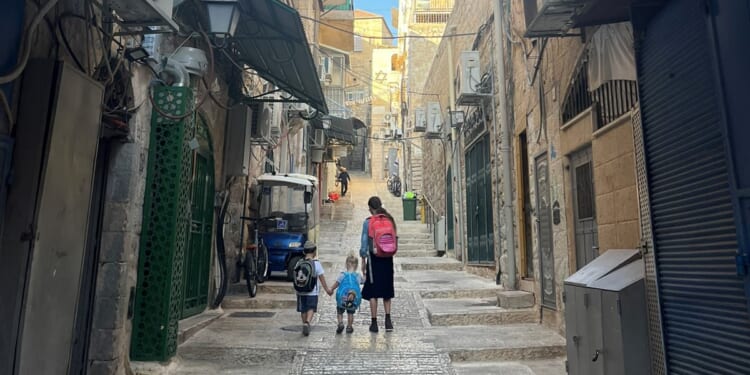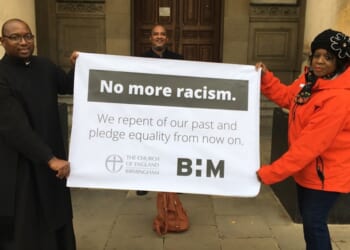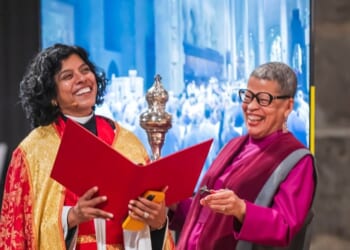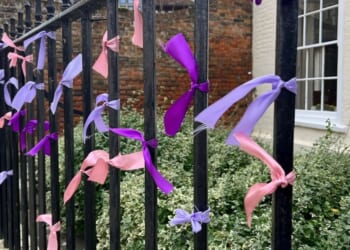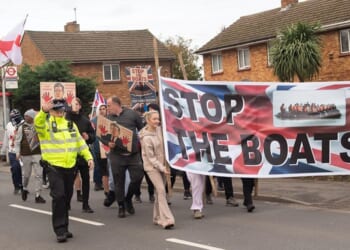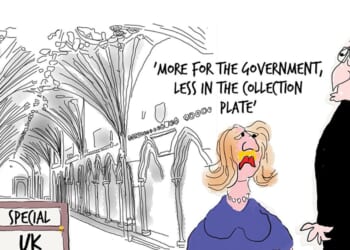Absent friends
IN THIS column in April, when a trip to Jerusalem was cancelled, I drew on memory and imagination (mine and others’) to travel there in mind and spirit, if not in body (Notebook, 20 June). To my editor’s relief, I can write now about an actual trip, made this month in the company of the Archbishop of York.
An archiepiscopal itinerary does not allow for much free time. The early mornings were my only opportunity to wander the streets of the Old City. At 7 a.m., the Western Wall is already bustling like a university campus on the first day of term, with men (and some women) of all ages engaged in prayer and study.
Above, on Haram al-Sharif (Temple Mount), Palestinian children squabble over a football before the prayers that start the school day, while a tour group of Old German Baptist Brethren — the men bearded and behatted, the women in cotton bonnets — admire the Dome of the Rock, their voices sounding across the plaza like foghorns.
I walk through the narrow streets of the Old City to Al-Khalidiyya Ascent. Shortly before I visited two years ago, a Palestinian family had been evicted from their home here (Diary, 25 August 2023). I had spoken briefly to an Israeli man coming out of the house, who had told me he was measuring up for renovations. Now, it looks like the work is complete, and the graffiti left by protesters has been scrubbed clean. Israeli flags remain on the walls.
The children, still sleepy, clutch at parents cajoling them out of the house in sing-song tones. It is an image that you might find in any town or village around the world. But I can’t stop thinking about the family who are not here, on this street, on this unseasonably hot morning in occupied east Jerusalem.
Unsettling experiences
I HAVE written in the news pages about a dramatic day in the South Hebron Hills, during which the Archbishop’s delegation was followed by a band of settlers, their faces obscured by balaclavas but their assault rifles displayed for all to see (News, 14 November). In reporting a story of this sort, the incidental human details are often lost: when the news is coming hot off the press, there isn’t time or space for a description of the tilt of a man’s hat, or the way in which children move through a landscape that is, quite literally, stained with blood.
The man with the hat, Eid Hathaleen, is an artist and community leader in the village of Umm al-Khair. He is fighting for the survival both of the fabric of his village (where more than a dozen buildings are under demolition orders from the Israeli authorities) and of his family, who have been killed defending it. In 2022, his father, described by Middle East Eye as an “iconic activist”, was run over and killed by a police tow-truck. And, in July this year, his cousin Awdah was shot dead while filming settlers smash a path through the village from the settlement of Carmel, which looms over Umm al-Khair.
The shooter, Yinon Levi, was released under house arrest and then cleared, even though the fatal shot had been captured on Awdah’s camera. Mr Levi then returned to finish construction of the settler outpost, which consists of a clutch of static caravans beside the village’s community centre.
When we visit, an Israeli flag is hanging from one of the caravans, and Awdah’s blood still stains the ground. I watch a young boy in a knitted kippah run from the caravans along the path that Mr Levi had torn, and up to the gates of Carmel. A few minutes later, the armed men arrive in a white truck, and take it upon themselves to follow the Archbishop to another part of the village.
Palestinian children gambol after the truck, jeering with an exuberance that splices hostility with play. The settlers block our minibus in a stand-off that ends only when the military arrive. As the soldiers and settlers depart, the kids send them on their way with a creative array of gestures.
Blocked arteries
ON THE drive back to Jerusalem, we pull off the main road just beyond a sign warning that we are entering Area A, the 18 per cent or so of the West Bank which is technically governed exclusively by the Palestinian Authority, and which Israeli civilians are forbidden to enter.
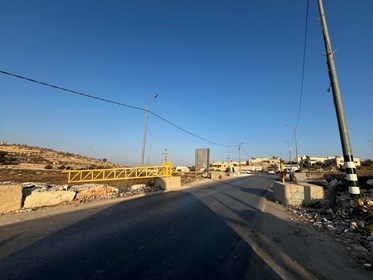 An open gate in Area C of the West Bank
An open gate in Area C of the West Bank
But a steel gate, painted yellow, beside the sign tells a different story about sovereignty. At present, it is open, as I’m told it has been since it was installed by the IDF earlier this year: one of a hundred or so such brightly coloured gates to have appeared in the past 12 months. An open gate, though, is a latent threat: at any time it could be closed, and the traffic coming through — in both directions — could be either rerouted or stopped entirely.
Everywhere we go in the West Bank, we hear how roadblocks and checkpoints disrupt the daily lives of Palestinians, from the church worker whose commute is more than doubled when the checkpoint is closed, and who once spent ten hours waiting to get across one of the territory’s internal borders, to children’s mental-health counsellors, who can only ever arrange one visit a day, in expectation of delays at military checkpoints.
That children cannot get the mental-health support that they need because of the militarisation of their environment, which is one of the reasons that they need such support, is another irony in a “Holy Land” full of them.
Rocky remains
COME to the Holy Land, and you will hear references to the “living stones”: the native Christian population of the land. And the stones certainly seem to come alive in the intimacy of St Andrew’s, Ramallah, where the low vaulted-ceiling of rough-hewn rock seems to vibrate during a rendition in Arabic of “How great thou art”.
In meetings after the service, though, fears are expressed that — such is the pace of Christian emigration from the occupied West Bank and east Jerusalem — within a few decades there may only be ancient stones left for pilgrims to see.
Brain drain is a particular problem. If graduates can find more job opportunities and fewer hardships outside their homeland, why would they stay? The Archbishop in Jerusalem, the Most Revd Hosam Naoum, acknowledges the problem, but is passionate both in his own commitment to remaining and in encouraging pilgrims to visit — while emphasising that visitors need not expose themselves to settler harassment (News, 21 November).
Instead, pilgrims might content themselves with Hebron’s feline namesake: a svelte, pale-eyed cat, who greets us every morning outside the pilgrim guesthouse at St George’s College, where she was raised by the Dean, the Very Revd Canon Richard Sewell, and his wife, JulieAnn, after Hebron and her siblings were abandoned by their mother.
But not all the wildlife is as friendly. On an early-morning run up the Mount of Olives, I stopped to take a photo of the city below — the Dome of the Rock glinting like a gold coin amid the limestone jumble of the Old City — when an eruption of snarls and barks alerted me to four wild dogs baring their teeth as they scrambled down a scrubby bank towards me. In those circumstances, fight or flight was not a question.
Francis Martin is a staff writer for the Church Times.

